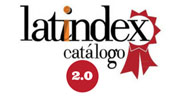Influencia de redes sociales en el análisis de sentimiento aplicado la situación Política en Ecuador
DOI:
https://doi.org/10.29019/enfoqueute.v9n1.235Palabras clave:
Análisis de sentimiento, Twitter, Minería de Texto, Stanford NLP, Rafael Correa.Resumen
Conocer la opinión de un sector de la población puede ser tan importante para lanzar un producto, como para saber la opinión de los electores. En Ecuador, la red social Twitter se ha convertido en uno de los principales medios de interacción directa entre figuras políticas y la población. Por lo cual un estudio que refleje los sentimientos en español por modismos de cada región, nos da una gran oportunidad de estudiar la relación entre el nivel de aceptación en Twitter de un candidato y los resultados electorales. El aporte de este artículo es el análisis de sentimientos (AS) utilizando una herramienta para PNL adaptada a la variación del español utilizado en el Ecuador, aprovechando que la mayoría de la literatura se ha centrado en el idioma inglés, mientras que adaptaciones para lenguajes, como el español, son mínimas y siguen en proceso por la complejidad inherente al lenguaje
Descargas
Referencias
Artigas, D., Muñoz, A., Luengo, F., Chourio, X., & Fernández, A. (abr de 2012). Caracterizando las elecciones venezolanas a través de Twitter. Caso: #26s. Anuario electrónico de estudios en Comunicación Social "Disertaciones, 5(1), 57-76.
Babiera, T. (3 de 2016). Técnicas para el análisis del sentimiento en Twitter: Aprendizaje Automático Supervisado y SentiStrength. Revista DÍGITOS, 33-50.
Baldasarri, S. (2017). Computación Afectiva: tecnología y emociones para mejorar la experiencia de usuario. 14,15.
Barberá, P., & Rivero, G. (2012). ¿Un tweet, un voto? Desigualdad en la discusión política en Twitter. I Congreso Internacional en Comunicación Política y Estrategias de Campaña.
Barbosa, L., & Feng, J. (2010). Robust sentiment detection on twitter from biased and noisy data. En Proceedings of the 23rd International Conference on Computational Linguistics, 36–44.
Bernard, J., Zhang, M., Sobel, K., & Chowdury, A. (2009). Twitter power: Tweets as electronic word of mouth. Journal of the American society for information science and technology, 60(11), 2169– 2188.
Bo, P., Lee, L., & Vaithyanathan, S. (2002). Thumbs up? Sentiment classification using machine learning techniques. PROCEEDINGS OF EMNLP, 79–86.
Bravo-Marquez, F., Mendoza, M., & Poblete, B. (2014). Meta-level sentiment models for big social data analysis. Knowledge-Based Systems, 69(1), 86–99.
Bustos, J., & Capilla, L. (2013). Twitter y la polarización del debate político: análisis del caso #objetivodeguindos y #aznara3. Revista Historia y Comunicación Social, 18, 499-509.
Caton, S., Hall, M., & Weinhardt, C. (2015). How do politicians use Facebook? An applied Social Observatory. Big Data & Society, 2(2).
Congosto, M. (2015). Elecciones Europeas 2014: Viralidad de los mensajes en TwitterRedes. Revista Hispana para el Análisis de Redes Sociales.
Da Silva, N., Hruschka, E., & Hruschka, E. (2014). Tweet sentiment analysis with classifier ensembles. Decision Support Systems, 66, 170–179.
Dang-Xuan, L., Stieglitz, S., Wladarsch, J., & Neuberger, C. (2013). An Investigation of Influentials and the Role of Sentiment in Political Communication on Twitter During Election Periods. Information, Communication & Society, 16(5), 795–825.
Group, S. N. (18 de 02 de 2018). Stanford NLP Group. Obtenido de Stanford NLP Group: https://nlp.stanford.edu/software/
Guevara, M., Pino, D., Mendoza, M., Pacheco, C., & Olivares, M. (August de 2013). Chile y el Ecosistema de las Elecciones Polıticas en Twitter. IV Congreso Internacional de Informática del Norte de Chile, Coquimbo-Chile.
Guo, L., & Vargo, C. (2015). The Power of Message Networks: A Big-Data Analysis of the Network Agenda Setting Model and Issue Ownership. Mass Communication and Society, 18(5), 557–576.
Jungherr, A. (2015). Analyzing Political Communication with Digital Trace Data: The Role of Twitter Messages in Social Science Research. Cham: Springer International Publishing Switzerland.
Lipka, N. (18 de 02 de 2018). Modeling Non-Standard Text Classification Tasks. Bauhaus-Universität Weimar , Germany.
Manning, C., Surdeanu, M., Bauer, J., Finkel, J., Bethard, S., & McClosky, D. (2014). The Stanford CoreNLP Natural Language Processing Toolkit. Proceedings of the 52nd Annual Meeting of the Association for Computational Linguistics: System Demonstrations, 55-60.
Martínez-Cámara, E., Martín-Valdivia, M., Ureña-López, L., & Montejo-Ráez, A. (2012). Sentiment analysis in twitter. Natural Language Engineering, 1-28.
Medhat, W., Hassan, A., & Korashy, H. (2014). Sentiment analysis algorithms and applications: A survey. Ain Shams Engineering Journal, 5(4), 1093-1113.
O´Connor, B., Krieger, M., & Ahn, D. (May 23-26 de 2010). Tweetmotif: Exploratory search and topic summarization for twitter. William W. Cohen y Samuel Gosling, editores, Proceedings of the Fourth International Conference on Weblogs and Social Media.
Padró, L., & Stanilovsky, E. (May de 2012). Freeling 3.0: Towards wider multilinguality. Proceedings of the Language Resources and Evaluation Conference (LREC), Istanbul,
Turkey.
Prata, D., Soares, K., Silva, M., Trevisan, D., & Letouze, P. (2016). Social Data Analysis of Brazilian’s Mood from Twitter. International Journal of Social Science and Humanity, 6(3), 179–183.
Robins, D., Frati, F., Alvarez, J., Texier, J., & Loto, L. (2012). Balotaje Argentina 2015 a partir de un análisis de sentimiento de tweets. Zenodo.
Turney, P. (2002). Thumbs up or thumbs down? Semantic orientation applied to unsupervised classification of reviews. ACL, 417–424.
Vargo, C., Guo, L., McCombs, M., & Shaw, D. (2014). Network Issue Agendas on Twitter During the 2012 U.S. Presidential Election. Journal of Communication, 64, 296–316.
Vinodhini, G., & Chandrasekaran, R. (2012). Sentiment analysis and opinion mining: A survey. International Journal, 2(6).
Wilson, T., Kozareva, Z., Nakov, P., Rosenthal, S., Stoyanov, V., & Ritter, A. (2013). Sentiment analysis in twitter. Proceedings of the International Workshop on Semantic Evaluation. SemEval.
Yu, Y., & Wang, X. (2015). World Cup 2014 in the Twitter World: A big data analysis of sentiments in U.S. sports fans’ tweets. En Computers in Human Behavior, 48, 392–400.
Publicado
Número
Sección
Licencia
Los autores retienen todos sus derechos (© copyright).
- Los autores retienen sus derechos de marca y patente, y también sobre cualquier proceso o procedimiento descrito en el artículo.
- Los autores retienen el derecho de compartir, copiar, distribuir, ejecutar y comunicar públicamente el artículo publicado en Enfoque UTE (por ejemplo, colocarlo en un repositorio institucional o publicarlo en un libro), siempre que se dé el reconocimiento de su publicación inicial en la revista Enfoque UTE.
- Los autores retienen el derecho a hacer una posterior publicación de su trabajo, de utilizar el artículo o cualquier parte de aquel (por ejemplo: una compilación de sus trabajos, notas para conferencias, tesis, o para un libro), siempre que indiquen la fuente de publicación (autores del trabajo, revista, volumen, número y fecha).
























